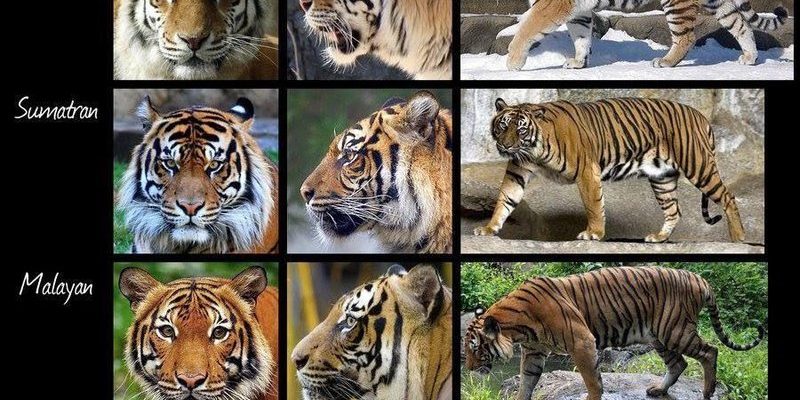
The Siberian tiger, also known as the Amur tiger, is more than just a pretty face. It’s a symbol of resilience, having weathered climate changes and habitat loss over millions of years. Their story is tied deeply to the ecosystems of Russia and Northeast China, where they once roamed vast territories. As we explore the evolutionary journey of the Siberian tiger, we’ll uncover the twists and turns that led to the incredible animal we see today.
Origin of the Big Cats
The story of the Siberian tiger begins with the broader lineage of *Panthera*, the genus that includes all big cats. Scientists believe that the common ancestor of modern big cats originated around 6 to 10 million years ago in Asia. This ancestor eventually branched off, leading to the formation of various species, including lions, leopards, and, of course, tigers.
You might be wondering how these majestic cats adapted to various climates and environments. Well, as they spread across different terrains, they developed unique adaptations. For instance, tigers in warmer regions tended to have shorter fur, while those in colder habitats—like the Siberian tiger—evolved a thicker coat to keep warm in icy temperatures. It’s pretty fascinating to think about how the Siberian tiger’s physical traits are directly linked to its environment!
Geographical Distribution and Habitat
Over the ages, Siberian tigers have inhabited diverse landscapes, ranging from lush forests to rugged mountains. Originally, they roamed across parts of Asia, including the Korean Peninsula, Mongolia, and even eastern China. As their habitats shifted due to climate changes and human activities, their territories shrank significantly.
Imagine walking through the vast forests of Siberia, where these big cats once had the freedom to roam. Today, Siberian tigers are primarily found in the Russian Far East, specifically in the Sikhote-Alin mountain range. This region is a mixture of temperate forests and mountainous terrain, providing the perfect cover for tigers to stalk their prey—mostly deer and wild boar.
Unfortunately, habitat loss due to logging, agriculture, and urban development has restricted these magnificent creatures to a much smaller area than they once inhabited. Conservationists are working tirelessly to protect these habitats, hoping to ensure that future generations can continue to marvel at the Siberian tiger in its natural environment.
Evolutionary Adaptations
The Siberian tiger’s evolution has been marked by several key adaptations that make it a master of its environment. One of the most notable is its fur. Siberian tigers have longer and denser fur compared to their tropical counterparts. This thick coat allows them to stay warm during frigid winters, which can dip far below freezing.
Another significant adaptation is their size. Siberian tigers are generally larger than other tiger subspecies, and this size gives them an advantage when hunting larger prey. They have powerful muscles and strong limbs that help them with swift, stealthy movements. Who wouldn’t want those qualities when you’re out hunting in the snow?
Lastly, let’s talk about their behavior. Siberian tigers are solitary creatures, spending most of their time alone. This behavior has evolved as a survival strategy, reducing competition for food and resources. It’s wild to think that every Siberian tiger is a skilled hunter in its own right, navigating the vast wilderness on its own terms.
Genetic Studies and Conservation Efforts
Advancements in genetic studies have provided new insights into the Siberian tiger’s evolutionary history. Researchers have sequenced the genomes of these big cats, revealing unique traits and helping to distinguish them from other tiger subspecies. For instance, the genetic differences among various tiger populations suggest that Siberian tigers have long been separated from their southern relatives, leading to distinct adaptations.
Conservation efforts are crucial for the survival of the Siberian tiger today. Organizations worldwide are working to protect their habitats and address threats like poaching and climate change. Anti-poaching initiatives and wildlife reserves are being established to create safe environments where these magnificent cats can thrive.
Honestly, it’s heartening to see communities coming together to protect the Siberian tiger. They’re not just fighting for the survival of a species but also for the larger ecosystem that relies on these apex predators to maintain balance.
The Threats to Siberian Tigers
Despite their adaptability and resilience, Siberian tigers face numerous threats. Habitat loss is perhaps the most significant, as deforestation and human encroachment continue to shrink their living spaces.
Moreover, poaching remains a severe issue. Despite efforts to crack down on illegal hunting, there’s still demand for tiger parts in traditional medicine and as status symbols. This illicit trade poses a significant risk to their populations. It’s heartbreaking to think that these magnificent creatures are still hunted for profit.
Climate change also plays a role, impacting their habitats and food sources. As temperatures rise, the delicate balance of the ecosystems that sustain Siberian tigers is disrupted. This means that ongoing conservation efforts must also consider future environmental changes to ensure the continued survival of these stunning animals.
Restoration and Future Prospects
The future of the Siberian tiger depends heavily on conservation efforts and public awareness. Successful breeding programs and wildlife corridors have shown promise in increasing the tiger population in protected areas. These corridors are essential for allowing animals to travel between habitats, which helps to maintain genetic diversity—an important factor for any species’ survival.
You might find it inspiring to know that organizations are not just fighting for Siberian tigers but also for entire ecosystems. By protecting these cats, they’re also safeguarding countless other species that share their habitat. This interconnectedness highlights the importance of tigers as both a symbol and a keystone species within their ecosystem.
As global awareness of wildlife conservation grows, there’s hope that Siberian tigers will not only survive but thrive. The continued efforts of conservationists, researchers, and the public can make a real difference in ensuring that future generations will experience the wonder of seeing a Siberian tiger in the wild.
The evolutionary history of the Siberian tiger tells a compelling story of survival and adaptation. From their robust characteristics developed over millions of years to the challenges they face today, these magnificent animals exemplify resilience in the face of adversity. While the future may seem daunting, ongoing efforts to protect and restore their habitats offer a glimmer of hope.
Here’s the thing: the survival of the Siberian tiger is about more than just one species—it’s about preserving the rich tapestry of life on our planet. By understanding their history and supporting conservation efforts, we can all play a part in ensuring that these incredible creatures continue to roam our forests for generations to come. What a legacy that would be!

